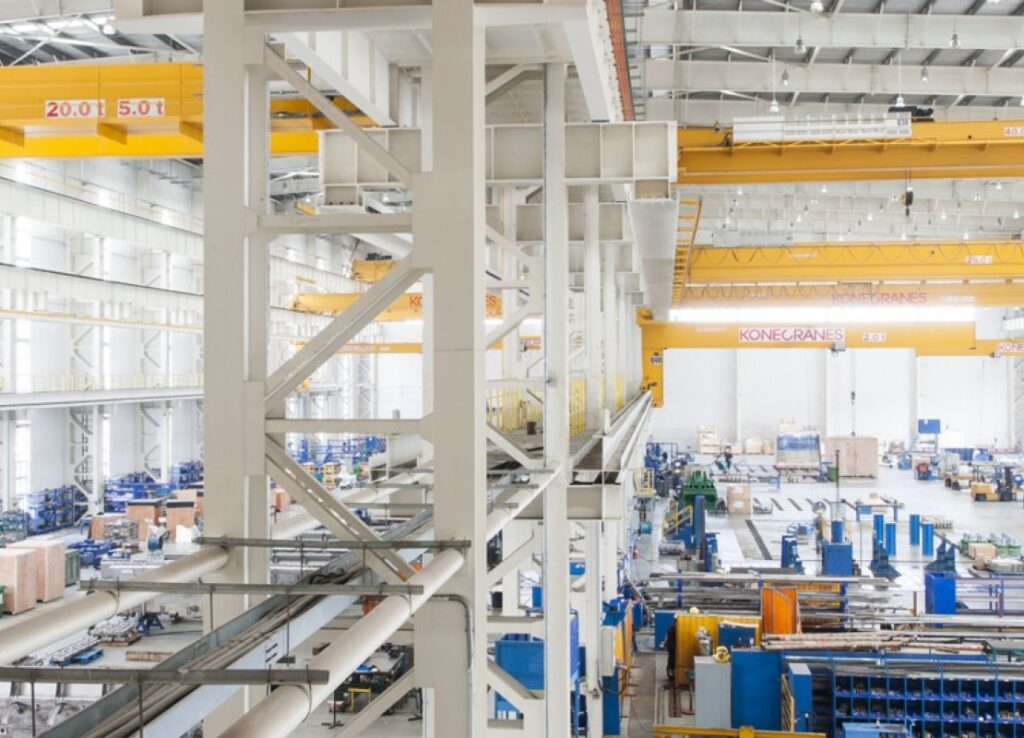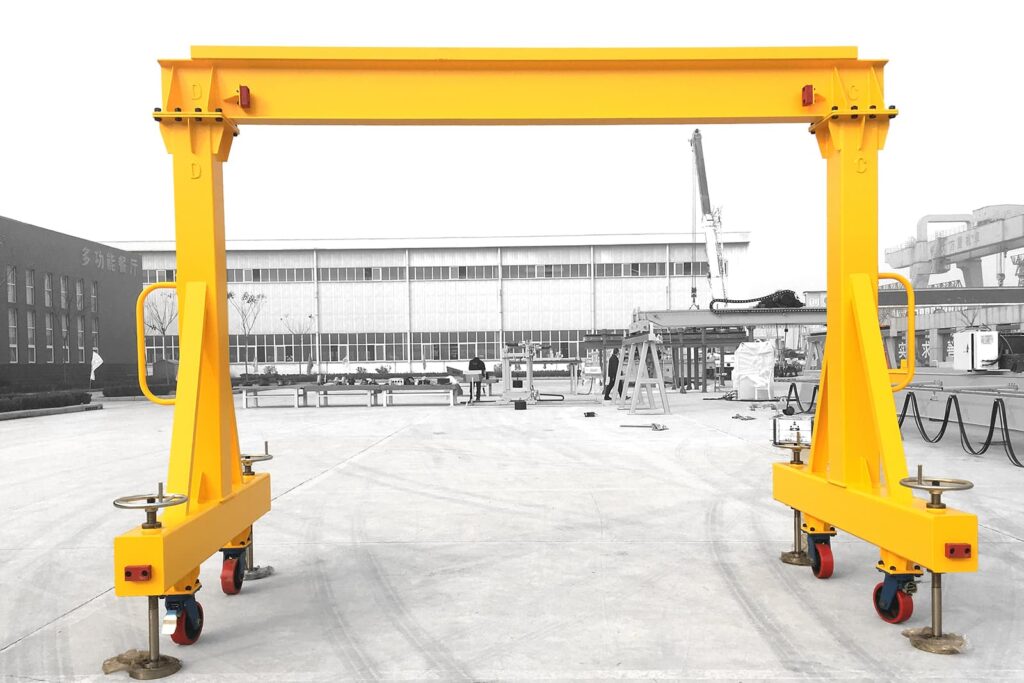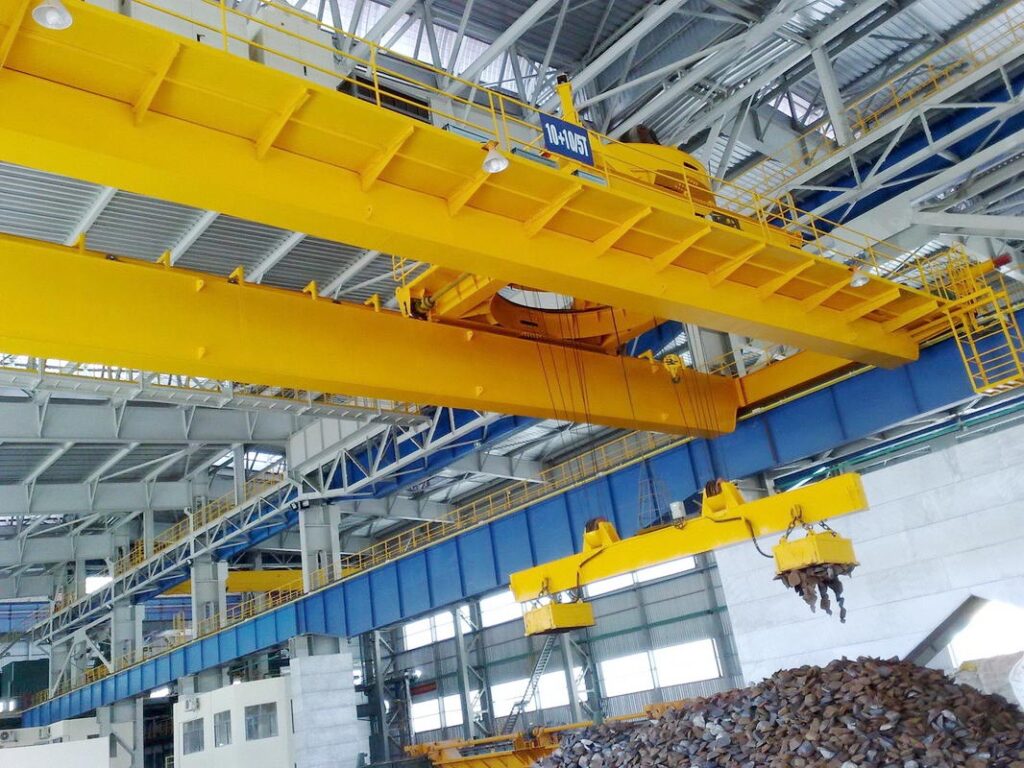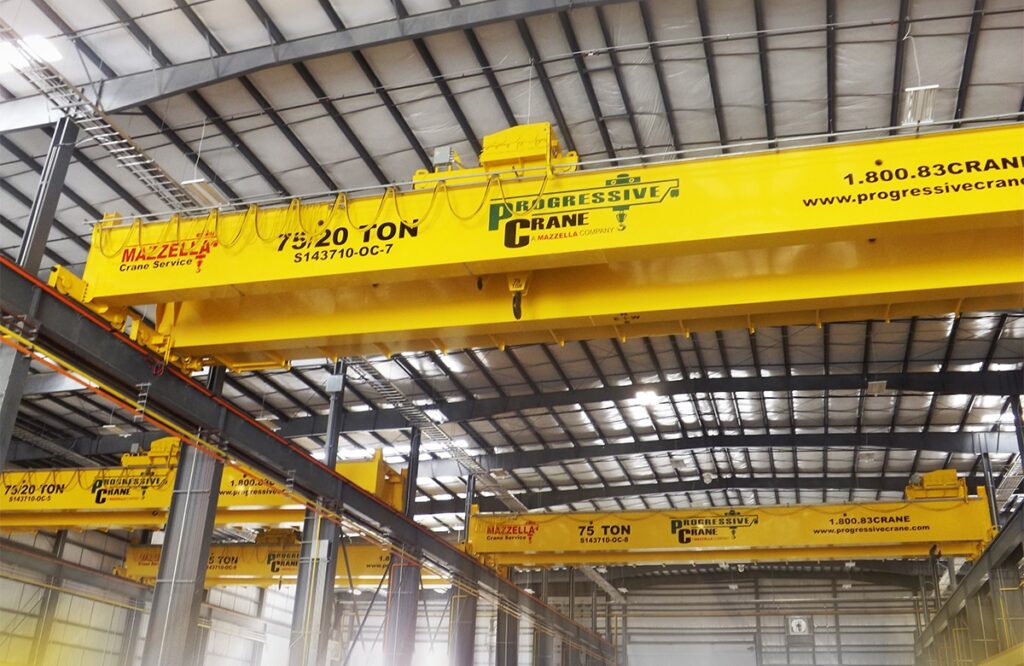There’s a huge variety of cranes used in small and large industrial applications, from tower cranes in the construction of skyscrapers, bridge cranes used to unload containers in docks, to small gantry cranes used in warehouses and workshops. The last two are examples of overhead cranes, which are either fixed or can be moved along a variety of mechanisms, like rails or wheels, and consist of a system of vertical beams connected by a girder or bridge. Suspended from the bridge is the hoist, the device that does the lifting. There are many types of overhead cranes. Here, I’ll be looking at gantry cranes, and the hoists used with them.
What are Gantry Cranes?
Gantry cranes are a type of overhead crane consisting of one or more bridges hanging from two vertical beams or legs. The legs are movable, either along a track, or system of rails embedded in the ground. Gantry cranes are mobile and are positioned to straddle above the load that is to be lifted. In large industrial settings, they are used in lifting and moving large objects, like unloading cargo containers in ports, lifting heavy loads in factories, in maintenance work in rail yards, and assembly of large equipment and machinery. Gantry cranes do not need to be attached to the building’s support structure, meaning they can be moved around within the facility and take up far less space than typical bridge cranes.

Types of Gantry Cranes
There are three types of gantry cranes. Full gantry cranes consist of two legs, moved along a network of rails. A bridge connecting the legs has trolleys moving along the bridge length and house the hoists and cables that handle the lifting. Full gantry cranes are used in large sites for lifting the heaviest loads. For interesting facts about crane lifting capacities, including gantry cranes, see here.
Semi Gantry Cranes consist of one movable leg, and a bridge connected to the building structure. They take up substantially less space than full gantry cranes but lift substantially smaller loads. Semi gantry cranes are often seen in production sites, like aircraft and automobile plants.
Portable gantry cranes consist of a set of typically four height and width adjustable legs supporting a beam. Set on the beam is a hoist that does the lifting. The crane sits on castors or wheels on each leg. As the name implies, portable gantry cranes can be moved around easily through different areas within workshops, warehouses or factories.
What are Gantry Hoists?
Hoists are the devices used for lifting and lowering loads. Gantry hoists are attached to the bridge or horizontal beam of gantry cranes. There are different types of gantry hoists based on the lifting mechanism, how these mechanisms are operated and powered, and how they are suspended from the bridge.
Lifting Mechanisms
Gantry hoists use either chains or wire rope to lift and lower loads. The chain or rope is suspended from a connecting heavy-duty hook, trolley or lug. Two types of chain blocks are used – welded interwoven chain links, and roller links. Welded chains are sold in different sizes that depend on the diameter of the links, whereas roller links are sold by the spacing or distance between individual links. Welded chains are the more common of the two types. Chain blocks for small businesses have a lift capacity ranging from 250kg for hand-operated chain hoists, all the way up to 15 tonnes for electrically operated hoists.

Wire rope hoists consist of a wire core and wire strands woven around the core. Wire hoists sizes refer to the diameter of the wire. The core is made of iron or steel, and zinc plating is used against corrosion on individual steel strands. Lifting capacities vary, with commercial hoists capable of lifting up to 5 tonnes.
Operation and Power
Chain blocks and wire rope can be operated manually, by one or more operators, electrically by way of an electric motor, or with air power by an air motor. Electric hoists have a pendant control enclosure suspended from the hoist, or may use a remote controller. Controller levers are used to move the load up or down. Electrically operated hoists are preferred for lifting heavier items. Pneumatic or air-powered hoists control hoists by a pneumatic motor. Power from the motor engages a sprocket on the hoist, moving it and the load up or down. Wire rope is powered exclusively by an electric or air hoist, whereas chain blocks can also be manually powered and operated.
Suspension Type
Chain blocks can be suspended from the gantry beam by way of a hook, lug or trolley. Hooks are allocated in fixed points along the beam. Lugs are mounted in points along the top of the beam. Trolley mounted hoists are hook mounted, clevis mounted or lug mounted and suspended from trolleys. Trolleys can be either manually operated or electrically operated with a fixed pendant or remote controller. Wire rope hoists are either mounted on lugs or trolleys, but rarely on hooks.

Buying Gantry Cranes and Hoists
For small to medium businesses, gantry cranes and hoists are used in a range of situations where there is the need to lift heavy objects. Cranes and hoists have different load ratings, from small one-tonne cranes fitting smaller manually operated hoists, to larger cranes with electrically or pneumatically powered hoists capable of lifting much larger loads. Portable gantry cranes are purposeful tools that take up little space in small shops. They take a range of hoists, and accessories to make lifting easier, quicker and safer. Portable cranes and hoists are sold in warehousing stores and specialised hardware stores.
























